Topics:
Never Miss a Beat - Get Updates Direct to Your Inbox
FILTER:


3 Types of Add Backs that Add Value to Your Ecommerce Business
By Quiet Light
How much is your business worth? That’s a million-dollar question for some entrepreneurs. Whether you plan to sell eventually or not, you have to know the value of your business as an asset. To know your worth, you have to understand the dance between your SDE and multiple. You can add value to your business by identifying a clear addback schedule in your profit and loss (P&L) statement. Learn how to calculate your SDE and multiple, and how the 3 levels of addbacks affect your value.
In all likelihood, your business is your most valuable asset. But no matter how successful your eCommerce business is, 50% of all the money you’ll ever earn from this business will come when you sell it.
For most of you reading this, that means that, at most, you’ve only realized half of your business value. But a business doesn’t have value “just because:” you have to prepare to sell your business from the start. Not only does this put more revenue in your pocket, but it’s also about doing the right thing and creating a great opportunity for your future buyer.
However, some eCommerce businesses lack a pool of enthusiastic buyers. Even though you’re doing great things and driving revenue, a buyer might not want to purchase your business.


Listen to the Source of this Post:
This blog post is based on a podcast episode that we recently recorded. Listen to the full episode here:Your business might be unsellable if:
- You’re commingling too many SKUs under one brand. This makes it hard to sell off a SKU or a brand down the road.
- You don’t use proper accounting software, like QuickBooks or Xero.
- The brand is too dependent on you. For example, you’ve named the business after yourself or if it relies on your specialized knowledge.
Fortunately, this is reversible if you start early enough.
But to see where your eCommerce business is today, and assess how much it could be worth to a buyer, you need to know your fair market value. “When you’ve got the right data, the SDE and the multiple equal the list price,” says Quiet Light’s Joe Valley. That means correctly calculating your Seller’s Discretionary Earnings (SDE), which includes your multiple and your addback schedule.
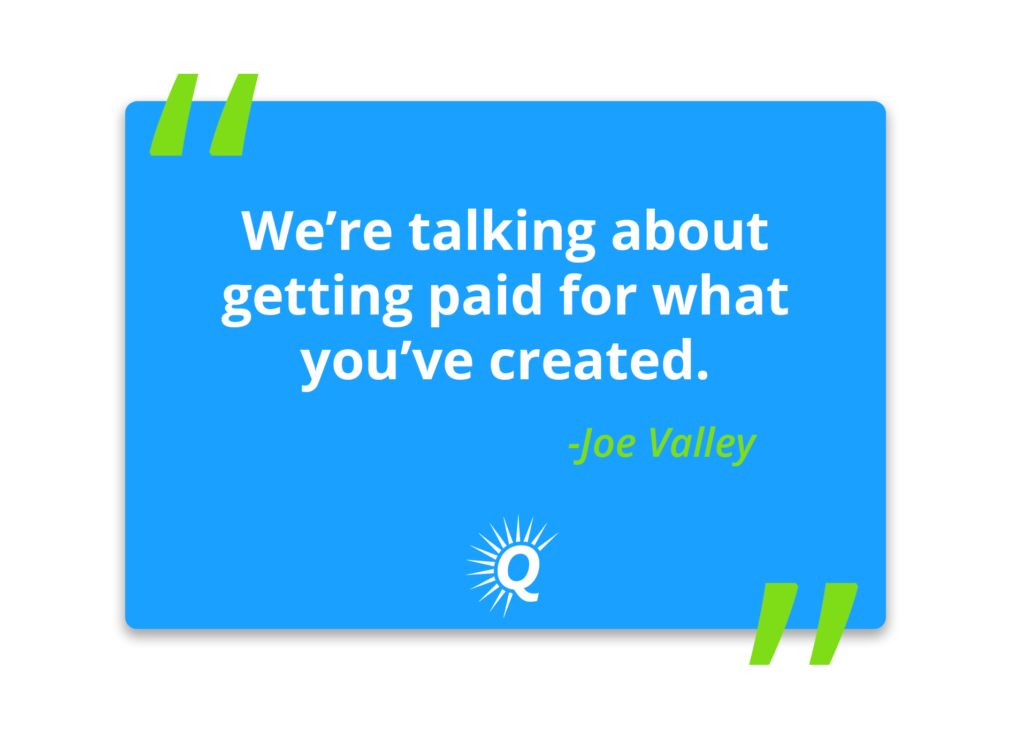

Your goal shouldn’t be to jack up the SDE or the value of your business with “creative math.” This is about getting paid a fair, correct price for what you’ve created. Actually, if you’re taking a do-it-yourself approach to your eCommerce business sale, or go with an inexperienced broker, you could lose out on tens of even hundreds of thousands of dollars when you sell.
This isn’t about magic or creativity; it’s simple math and logic. And it all boils down to your addback schedule.
Calculating Your Accurate Valuation
So, how much is your business worth to a buyer? If you can’t calculate SDE correctly, you’ll never know. That’s because you multiply your SDE by your multiple to arrive at a fair value. This is a simple formula, but it takes a lot of finesse to arrive at a value that accurately reflects your eCommerce business. “Calculating SDE correctly is one of the most important things you can do for your business,” Joe adds.
Choosing The Right Multiple
So many factors affect your eCommerce business’s multiple, including:
- The size of the business
- Profit margins
- Year over year growth
- Multi-channel revenue versus single-channel revenue
- The economy as a whole
- How much you’re spending on ads as a percentage of total revenue
- How clean your books are
- The growth opportunities in the business
- The transferability of the business
Let’s break it down with an example about Company X. They have $100,000 in SDE for their 100% direct-to-consumer brand. They aren’t on a third-party like Amazon at all. Accounting for all of these factors, let’s say they can sell for a 3X multiple.
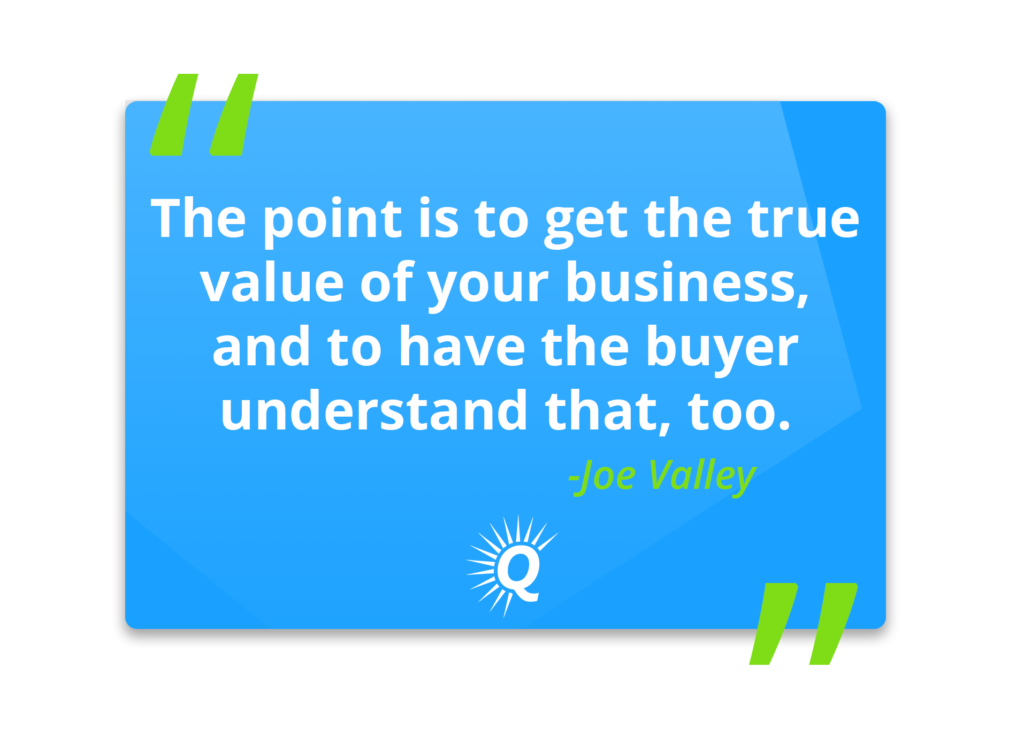

But if Company X had, say, a hero SKU that accounted for 70% of their business, it would likely bring their multiple down because they have more risk. If they were selling exclusively on a third-party platform, like Amazon, this could also reduce their multiple because of single-channel risk.
The average multiple can range based on market conditions, but right now it’s between 2.5X – 4X for most businesses. But your multiple doesn’t matter at all unless you have an accurate SDE.
Calculating SDE
You’ll need a profit and loss (P&L) statement to calculate your SDE. If you’ve been tracking everything in software like QuickBooks, you can quickly run this report. But remember, the report is only as good as the data in your system: it needs the right inputs to help you calculate profits. That’s essential to showing the real owner benefit of running this eCommerce business.


Use your P&L to calculate SDE. Here’s how the formula should look:
Net income + Addbacks = SDE
The P&L provides the net income information, but you’ll also need to know your addback schedule to correctly calculate SDE.
The 3 Levels of Addbacks For eCommerce Businesses
Your multiple relies on the value of the SDE, and the SDE relies on your P&L, as well as your addback schedule. All roads lead to addbacks, but many business owners overlook these critical building blocks of value when they think about selling their eCommerce business.
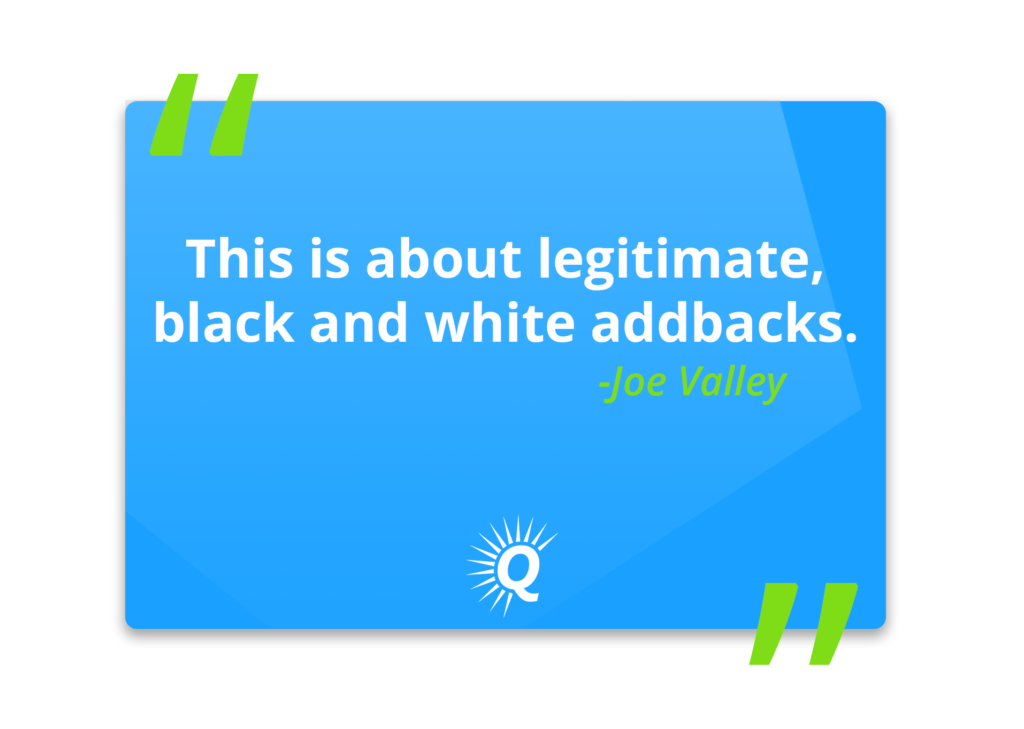

An addback accounts for expenses that won’t carry over to your buyer. “The goal of identifying addbacks is to identify the true baseline earnings potential for a buyer,” Joe says. It’s also beneficial if you don’t want to sell your business just yet, so you can understand the true value of your business as an asset.
Many people try to use accounting “tricks” to lessen their tax burden every year, but keep in mind that these can actually harm your valuation when it’s time to account for addbacks. Remember, addbacks aren’t about jacking up the price of your eCommerce business. It’s all about getting a fair value for your business.
Here’s how it looks in practice:
- Business B has $297,000 in net income from the business.
- Their Level 1 addbacks, like payroll taxes, charitable donations, and insurance add $75,000 back to their net income.
- Business B’s Level 2 addbacks for one-time accounting fees and depreciation add $84,000 back to their value.
- Their Level 3 addbacks, like cashback rewards and reduced cost of goods sold, add another $62,000 back to the business.
- When it’s all said and done, Business B went from $297,000 in net income to $518,000.
That’s a significant difference in business value. When you pay attention to details like addbacks, you’re going to get a more accurate value for your eCommerce business, whether you want to sell today or 5 years from now. However, not all addbacks are the same. Use the 3 different levels of addbacks to identify the true value of your business as an asset.


Level 1 addbacks
Level 1 addbacks are the obvious addbacks that qualify as an owner benefit. Let’s break down what qualifies as a Level 1 addback.
Owner Salary
If you’re paying yourself from the business, that’s a clear owner benefit. If you’re a solo business owner taking $250,000 in salary from the business, add that back.
The only exception is if you have more than one owner for an eCommerce business. In this case, you can only add back one owner payroll if both owners work 40 hours or more per week. However, if you have two owners who work less than 40 hours a week combined, you can add back both salaries so they equal a normal, 40-hour workweek.
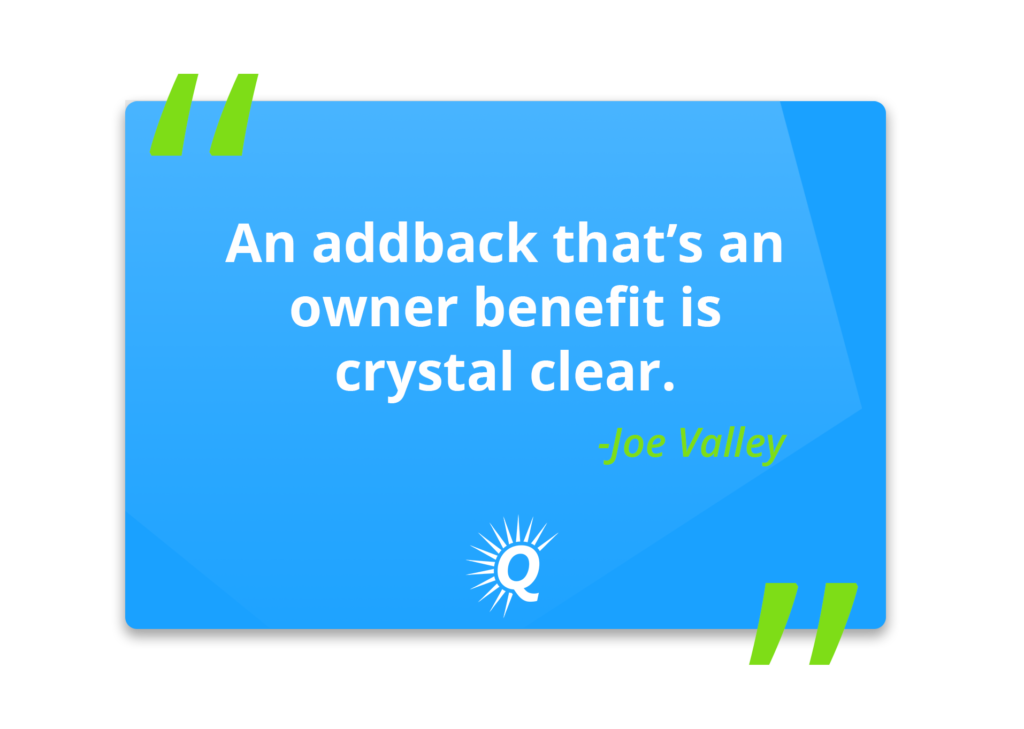

SBA Loans
Did you take out an SBA loan to buy this business? Don’t worry—any expenses related to taking out that loan, even several years ago, won’t carry forward to the new owner.
Other Level 1 addbacks
Any expense that’s an obvious owner benefit qualifies as a Level 1 addback. That includes expenses like:
- Owner health benefits
- Interest paid on expenses like Amazon lending
- Retirement contributions
- Business meals and entertainment
- Personal expenses
- Estimated quarterly tax payments to the IRS
Level 2 addbacks
Level 2 addbacks are less obvious, but they cover any one-time expense that doesn’t carry over to a new owner.


Intellectual Property
Did you invest in a trademark, copyright, patent, or logo design for your eCommerce business? If so, these expenses count as a one-time purchase that you can add back to the value of the business. After all, intellectual property makes your business more defensible, which buyers love to see. If you spend $20,000 filing a utility patent, you can add those expenses back to the value of your business.
Lawsuits
Did your business go through a lawsuit? As long as you don’t have a lawsuit every year, you can add back the expenses related to that lawsuit. But if lawsuits are a regular part of your business model, don’t add this expense back.
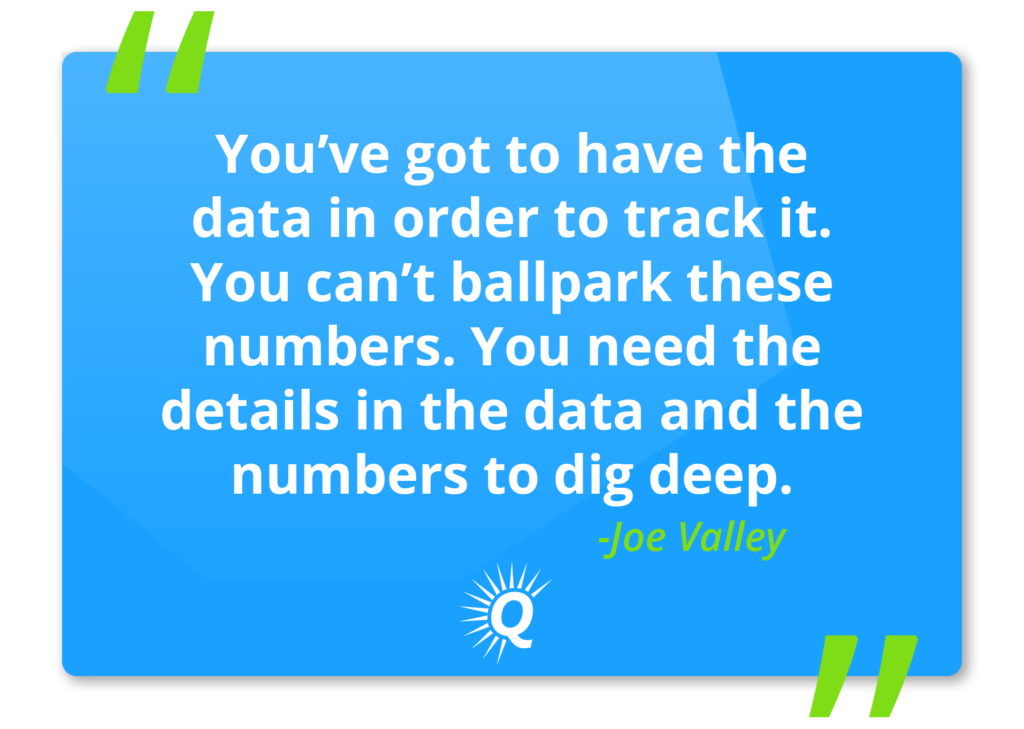

One-time Bookkeeping Help
This does not apply to hiring a bookkeeper for your eCommerce business. You can only add back the cost of hiring a bookkeeper for a one-time project, like importing your books from Google Drive to QuickBooks. This won’t carry forward to a new buyer because you’ve already done the work of importing data, so it qualifies as an addback.
Of course, if you haven’t imported your accounting information to a proper software, there’s no time like the present. “Have cleaner books. That’s going to help you get a better value for your business. It helps the buyer take something over that’s clean and documented,” Joe says.
Depreciation and Amortization
Have you bought laptops, vehicles, or furniture for your business? If so, you can add back the costs of depreciation on your assets. Amortization and depreciation are accounting expenses, and therefore qualify as an addback. Remember, this is only for assets that decrease in value over time. You can add back costs based on the remaining life of the asset.
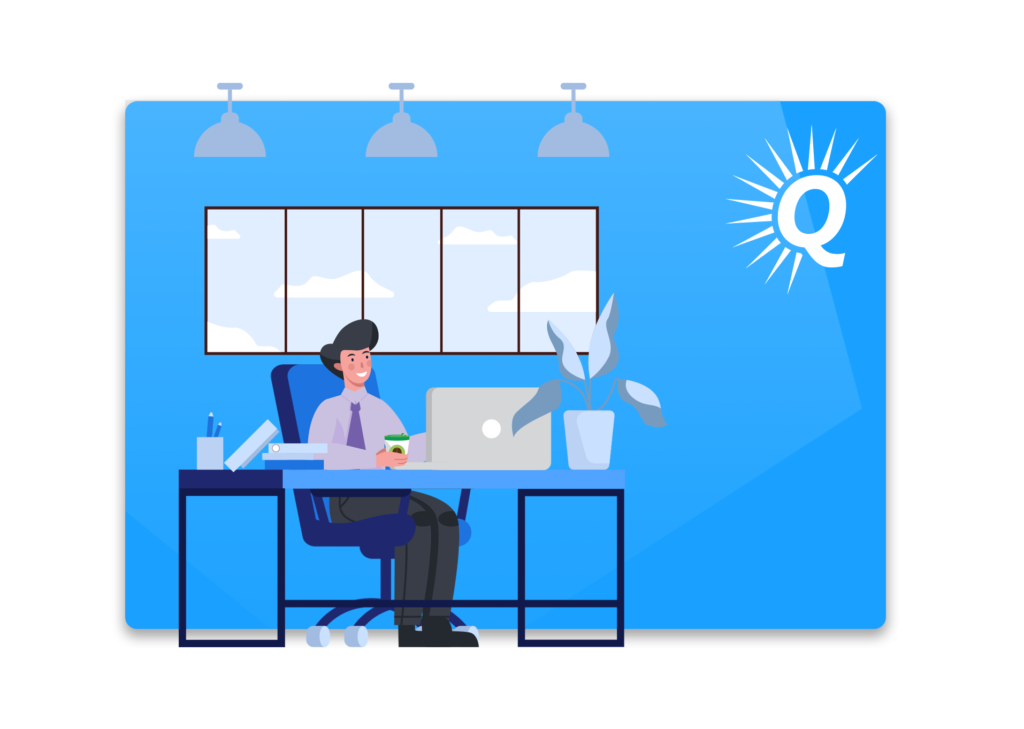

Level 3 addbacks
Level 3 addbacks require you to dig deep. These are the most complex addbacks that require math and logic. Whip out your calculator and use good records to back up your findings for these addbacks.
Website Redesign
As long as you don’t redesign your website every year, you can add back the costs of a new website. For example, if you spent $20,000 on a new website at a 3.5X multiple, you can add $70,000 to the SDE with this addback. However, if your P&L shows you do a web redesign more frequently, like every 2 years, you can do a partial addback.
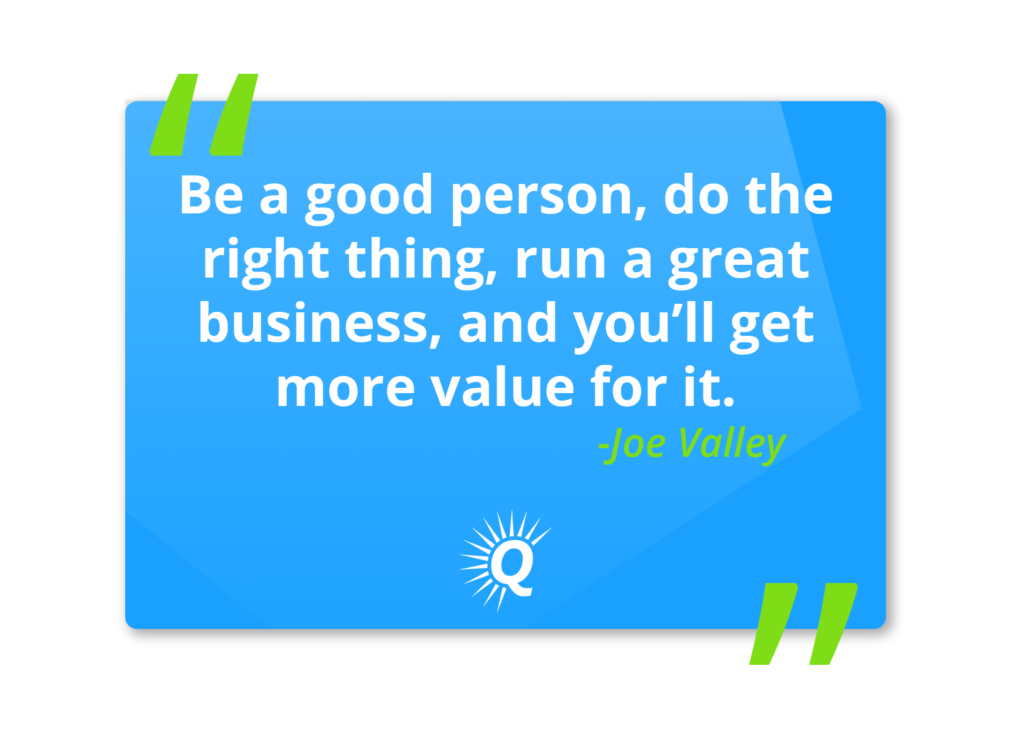

Mastermind Fees And Events
Mastermind fees don’t carry over to a buyer. These are designed to help you grow your eCommerce business; the new owner may or may not join a mastermind. That’s why they qualify as an addback. “That expense doesn’t carry forward. It helps you personally grow your business and gain knowledge,” Joe says. You can also add back any expenses related to travel or events for these masterminds. Owner benefits, like meals and sightseeing, also count as an addback.
However, the exception is if your business model relies on masterminds or events to find new customers. That means the cost of the mastermind or event is necessary for the new business owner, and wouldn’t count as an addback.
Cashback Rewards
Are you putting the costs to run your eCommerce business on a cashback credit card? This is an often-overlooked addback that usually qualifies as an owner benefit. “People just slide cashback into their personal income bank account and use the money for perks. It’s an owner benefit,” Joe says.
Say you put all of your business expenses on a rewards credit card and earn $24,000 a year in cashback. If you sell at a 3X multiple, that’s $75,000 in additional value to your business.
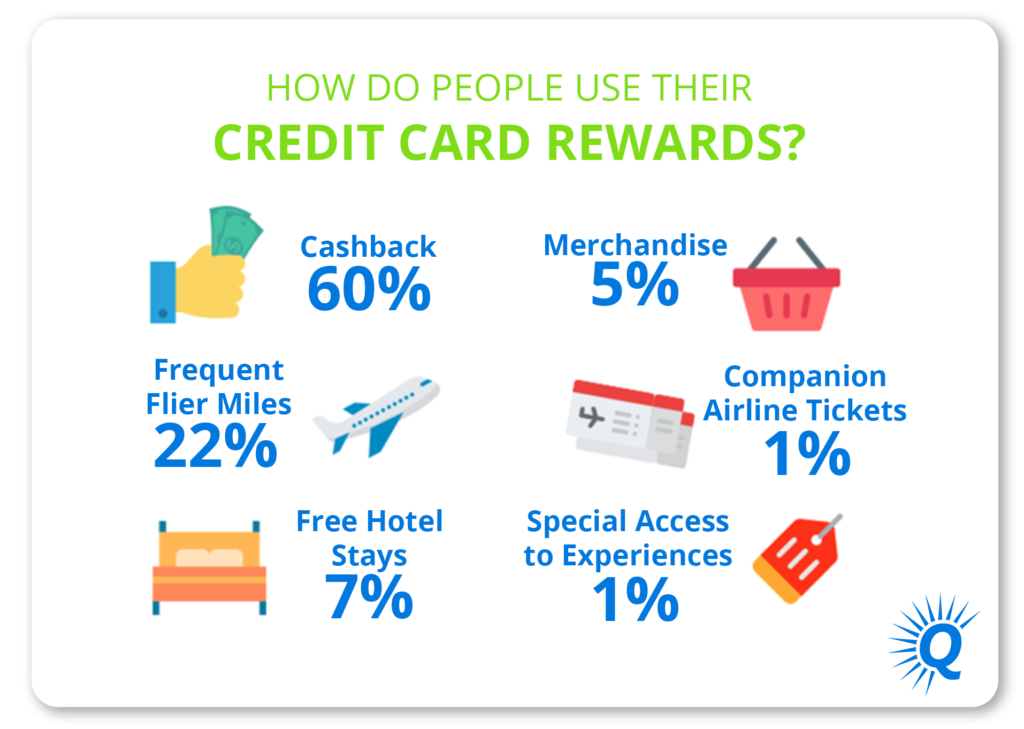

However, you need to track your cashback carefully. Use data and logic to demonstrate why this is an addback. You should always be able to explain your reasoning to a buyer.
Overpaid Employees
It’s tempting for entrepreneurs to hire people they can trust for their growing business. More often than not, that means hiring friends and family. But if you’ve hired your brother or your college roommate, chances are you’re overpaying them. If you try to sell an eCommerce business with overpaid employees, you’re going to lose 2 – 5 times the value of how much you’re overpaying these employees.
For example, Quiet Light once had a client selling at a 3.5X multiple. He was paying his brother $20/hour to do customer service work remotely. But thanks to automation and canned responses, the brother only worked 5 hours a week instead of a full 40 hours.


This meant the brother was significantly overpaid. “We did a negative addback, meaning we adjusted his income,” Joe says. Quiet Light adjusted the brother’s income to be more realistic and reflect what a new owner would have paid a regular virtual assistant to do the work. This turned out to be a $10,000 addback, which added $35,000 back to the value of the business.
Reduced Cost Of Goods
Say you’ve been paying $10 per unit as your cost of goods. But halfway through the year, you’re able to negotiate with your manufacturer to pay just $8 per unit. That’s a $2 savings per unit on your cost of goods, which can qualify as an addback.
You can retroactively apply that $2 savings per unit. If you sell 1,000 units a month, that would add $12,000 back, times your multiple. At a 3X multiple, that’s $36,000.
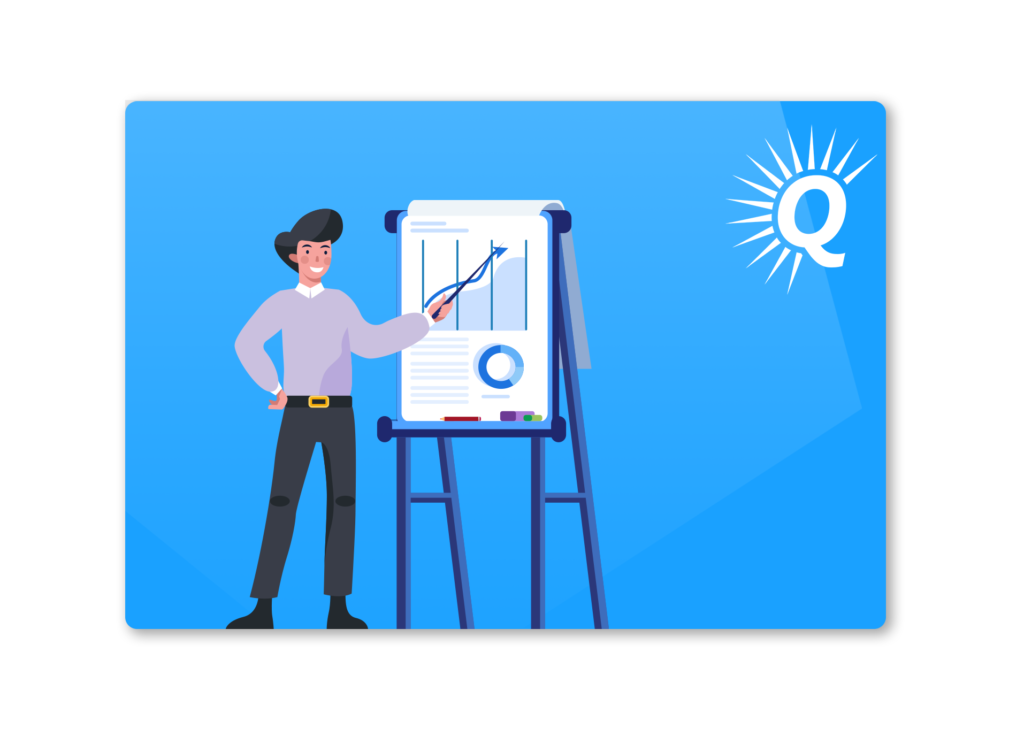

The same goes if you repackage your SKUs and reduce packaging or shipping costs. These savings carry forward to the new owner, which means it qualifies as an addback.
Tariffs
Has there been a recent reduction in tariffs? If your tariffs have been reduced by 50%, that savings carries forward to a new owner.
What Doesn’t Count As An Addback?
Once you see the power of addbacks in action, it’s easy to see how people can get carried away with adding back expenses. But when you go overboard on the addbacks, fuzzy math and flimsy justifications will only hurt your eCommerce business and a potential buyer. Here are a few common situations that don’t qualify for addbacks.
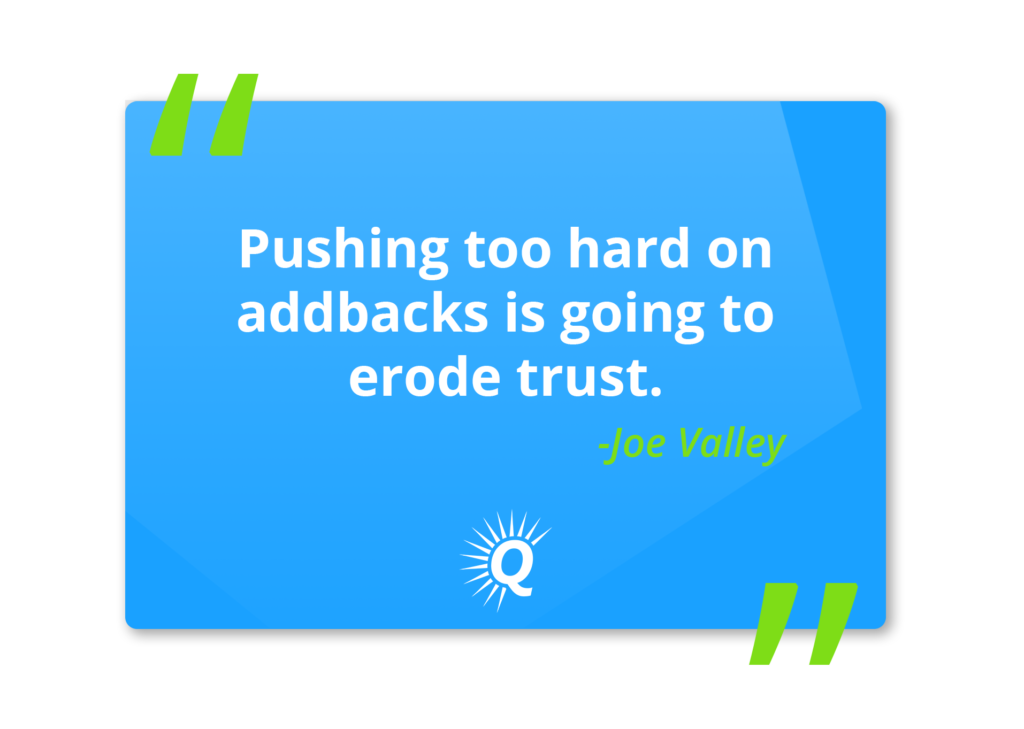

Inventory Stock-outs
If you’ve ever run out of inventory and lost business as a result, you can’t count that as an addback. This is just a part of running an eCommerce business. It’s likely that this will happen again in the future, so you can’t add this expense back to the business. “Most people are going to be out of stock at one time or another until you get better at cash flow management,” Joe says.
Failed Advertising
Everybody advertises. Even if your latest advertising campaign bombed, you can’t add that back. Advertising is a recurring part of running an eCommerce business, and it’s an expense your buyer will have to make once they take over.
A Second Owner’s Salary
You can’t add back a second owner’s salary if you’re working more than 40 hours a week combined. In fact, if you have a specialized skill set and you’re selling to a generalist buyer, they can’t replicate what you’re doing in 40 hours a week. In this situation, you would actually do a negative addback to show the true cost of hiring someone to do that role under a new owner.


Recently-Fired Essential Staff
You want 9 – 12 months to pass before you add back the costs of losing essential staff. You have to prove that the business can’t operate without these staff members before considering it as an addback.
Recent Cost-Cutting
Cost-cutting isn’t a legitimate addback. That goes double for cutting any critical costs, like advertising. “It’s just not the right thing to do. Recent cost-cutting isn’t a legitimate addback,” Joe says. If you normally spend $10,000 in advertising but slash it to $2,000 a month, you can’t claim that as an addback. This can actually harm the long-term health of your business and erode buyer trust, too.
Utilities
You can’t add back expenses related to your mobile phone, home office, or utilities. Unless they live under a rock, your buyer will have these expenses, too. “No one is going to buy your eCommerce business that doesn’t already have a mobile phone,” Joe says.
Get A Fair Value For Your eCommerce Business
50% of the value you’ll ever get from your eCommerce business will come from selling it. When you make addback planning a priority, you’ll know the true value of your business whenever you do eventually exit. “Bottom line, when you pay more attention to the details of the business, your value is going to be much, much higher,” Joe says.
Use Level 1 addbacks for anything that’s an obvious owner benefit, Level 2 addbacks for one-time expenses, and Level 3 addbacks for more overlooked benefits. Work with a bookkeeper every month to review your eCommerce business P&L. It helps to know your numbers so you can plan to make a more profitable exit from your business, whenever that might be.
There are no shortcuts to calculating the real value of your business. It’s time to dig deep, entrepreneur. Rely on math, logic, and common sense to earn what you’re worth.





